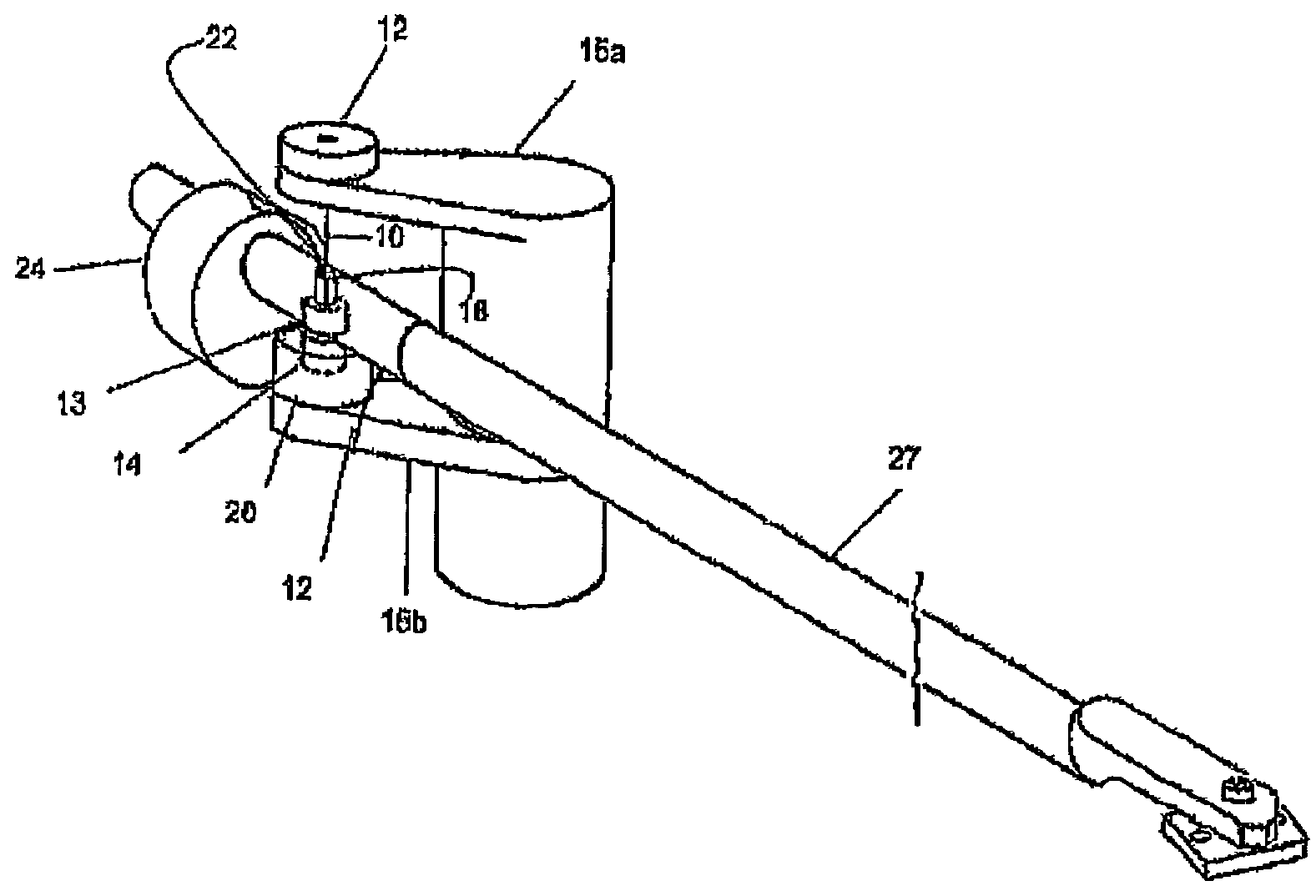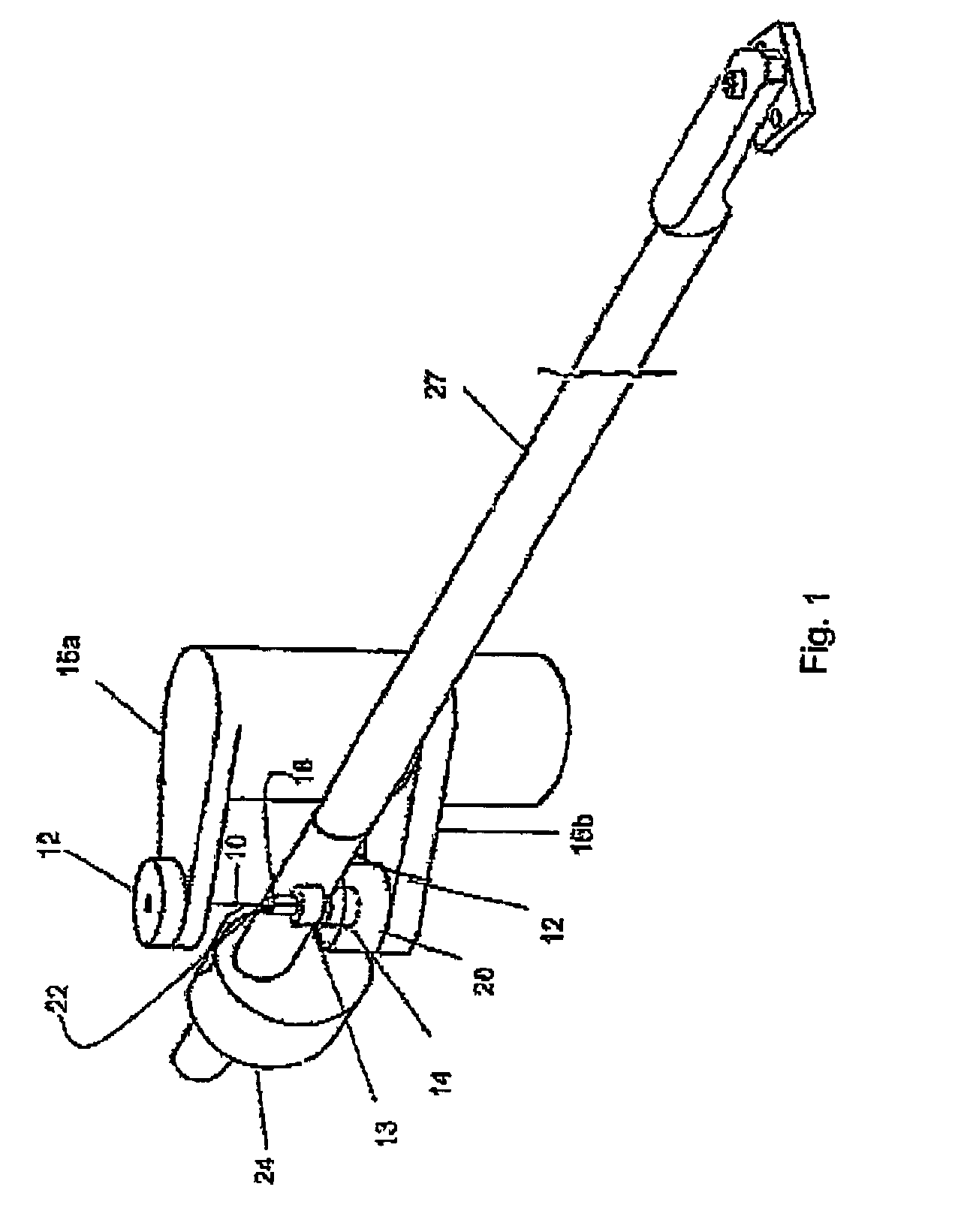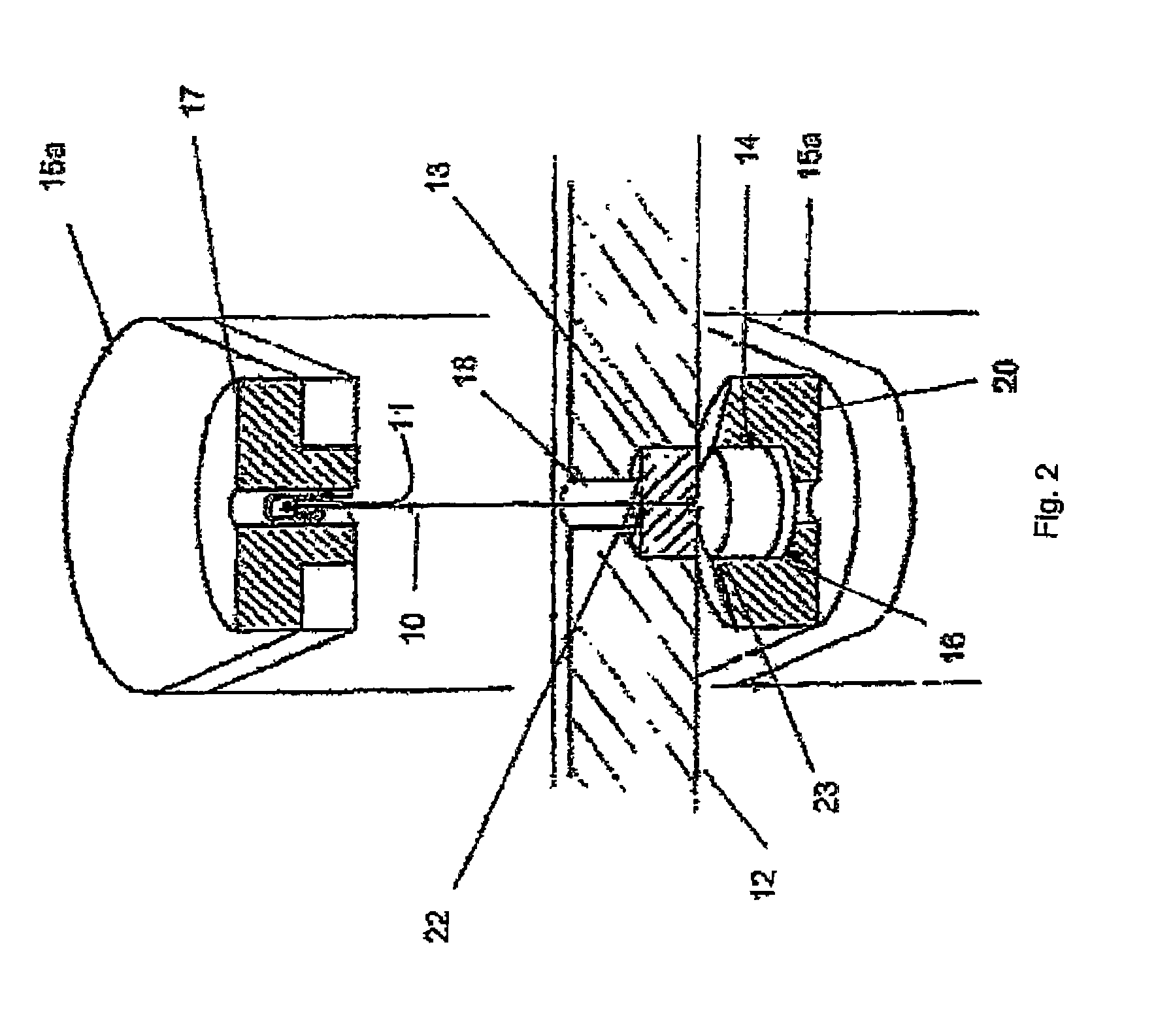Spring-suspension magnetically stabilized pick-up arm
a magnetically stabilized, spring-suspension technology, applied in mechanical recording, optical recording/reproducing, instruments, etc., can solve the problems of inability to reduce the disturbance of the pick-up arm movement to a system immanent minimum, detrimental to the fidelity of the cartridge's performance, and affecting the undisturbed tracking of the groove modulation
- Summary
- Abstract
- Description
- Claims
- Application Information
AI Technical Summary
Benefits of technology
Problems solved by technology
Method used
Image
Examples
Embodiment Construction
OF THE INVENTION
[0029]FIG. 1 shows a schematic side view of the complete pick-up arm system. Along it's vertical axis of rotation the pick-up arm receiving element 12 having an arm wand or pick-up arm tube 21 press-fit into or otherwise held by it. The receiving element 12 features a (sack-, drill-) hole or bore 18 through which the torsion element 10 is running. Following axially is hole 22, running through the permanent magnet 13, said hole's 22 diameter equal to the diameter of the torsion element, therefore much smaller than the diameter of hole 18. The hole / bore 18 can be filled partially or entirely with silicon oil to dampen resonances within the torsion element. The diameter of hole 22 does not permit any leakage of silicon oil.
[0030]At it's lower end the torsion element 10 is centered, free of play / slack, by the lower, drilled(hole 22) permanent magnet, fixed / held by a knot 23, or glued in. A gap exists between the permanent magnet 13, set into the pick-up arm receiving ele...
PUM
| Property | Measurement | Unit |
|---|---|---|
| frequency | aaaaa | aaaaa |
| frequency | aaaaa | aaaaa |
| polarity | aaaaa | aaaaa |
Abstract
Description
Claims
Application Information
 Login to View More
Login to View More - R&D
- Intellectual Property
- Life Sciences
- Materials
- Tech Scout
- Unparalleled Data Quality
- Higher Quality Content
- 60% Fewer Hallucinations
Browse by: Latest US Patents, China's latest patents, Technical Efficacy Thesaurus, Application Domain, Technology Topic, Popular Technical Reports.
© 2025 PatSnap. All rights reserved.Legal|Privacy policy|Modern Slavery Act Transparency Statement|Sitemap|About US| Contact US: help@patsnap.com



